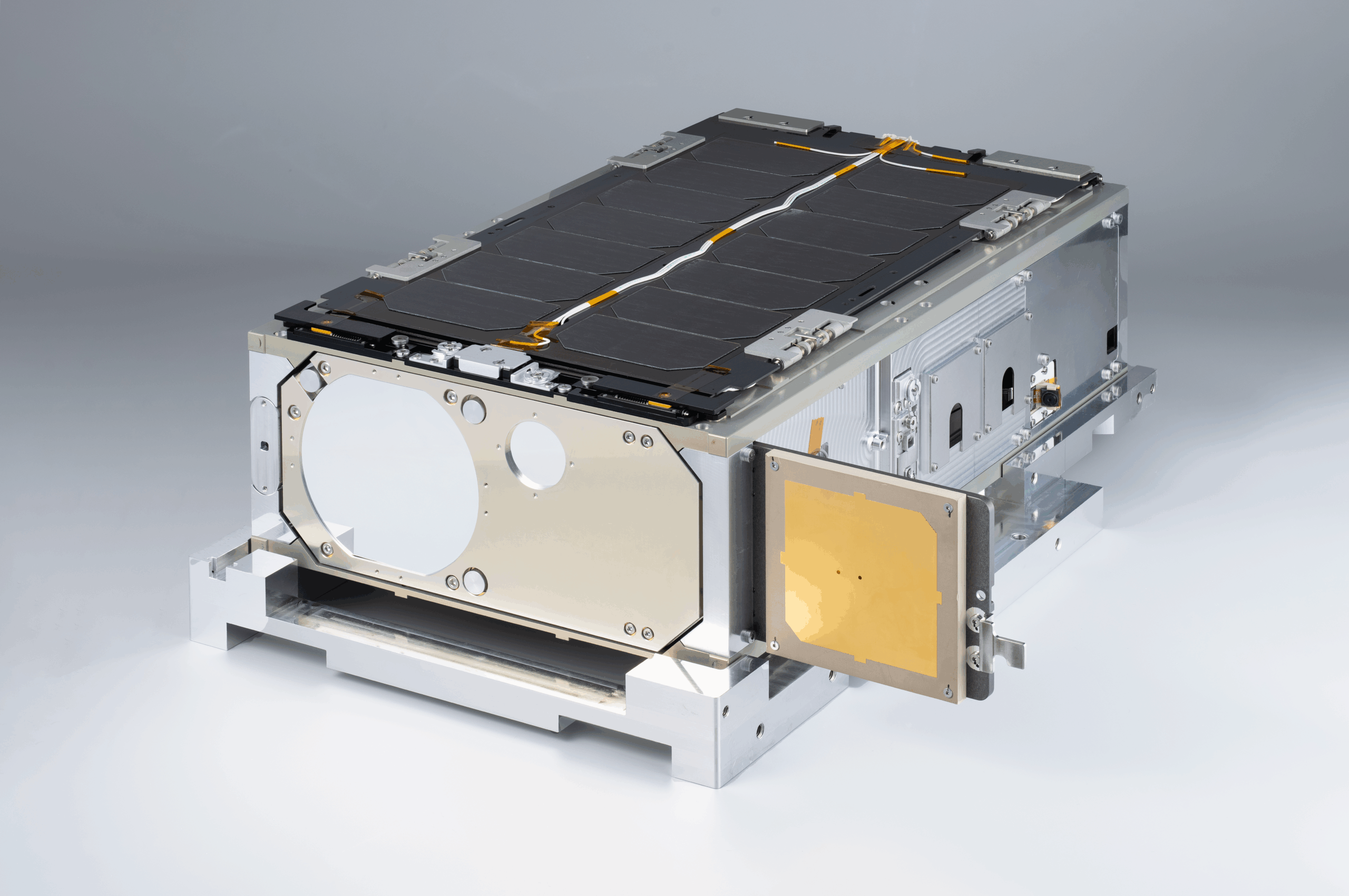Tokyo, Japan, October 16, 2025 — ArkEdge Space Inc. (“ArkEdge Space”), together with the National Institute of Information and Communications Technology (“NICT”), KIYOHARA OPTICS Inc. (“KIYOHARA OPTICS”), and SoftBank Corp. (“SoftBank”), today announced that they have signed a cooperative agreement to jointly develop and demonstrate optical wireless communications between space and the stratosphere, as well as between space and the ground. The four partners will advance the development of compact optical communication device and their application to both low Earth orbit (LEO) satellites and High Altitude Platform Stations (HAPS).
ArkEdge Space and its partners will first conduct space-to-ground demonstrations in 2026 to validate optical wireless links between space and ground stations. In 2027, the partners plan to carry out one of the world’s first demonstrations of two-way optical wireless links between a stratospheric HAPS and an orbiting LEO satellite.
Background: Demonstrating Optical Wireless Communication Between Space and the Stratosphere
Optical wireless communications, or laser links, are emerging as a next-generation technology enabling non-terrestrial networks (NTN), including satellites and HAPS. Already in practical use for inter-satellite links, the technology is expected to enable real-time relay of Earth observation data, connectivity in underserved regions, rapid restoration of communications during disasters, and ultra-low-latency intercontinental backbones, delivering high-capacity and flexible network architectures.
Because optical wireless communications use light instead of radio waves, they can achieve high-speed data transmission without requiring frequency allocation or radio station licenses. However, as the technology relies on extremely narrow and highly directional beams, establishing and maintaining stable connections is technically very challenging. In the 2027 demonstration, bidirectional optical communications will be conducted between a stratospheric HAPS platform and a rapidly orbiting LEO satellite over distances of up to approximately 2,000 kilometers—one of the most technically demanding experiments ever attempted. Successfully demonstrating these links would mark a major milestone in advancing optical wireless communication between space and the stratosphere.
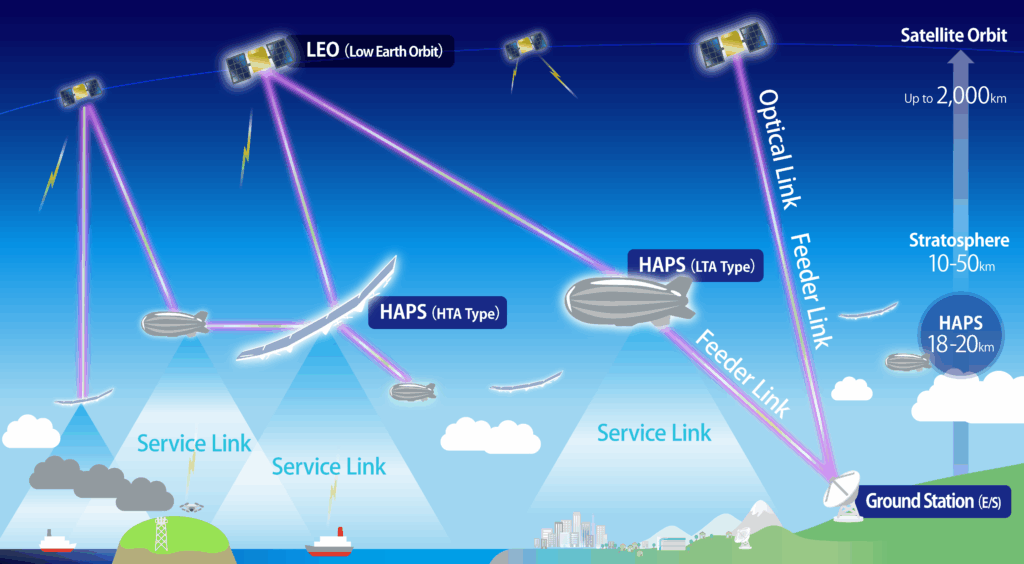 Conceptual image of optical wireless communications between space and the stratosphere
Conceptual image of optical wireless communications between space and the stratosphere
[1] HTA: Heavier Than Air, LTA: Lighter Than Air
Key Features of the Technology
- Compact Optical Terminal: Currently under development, the optical wireless communication terminal is designed to be ultra-small, lightweight, and energy-efficient while achieving 10 Gbps bidirectional data transmission. It is being engineered to operate reliably in harsh environments, including high-radiation conditions in space and stratosphere temperatures below –90 °C.
- Demonstration LEO Satellite: The demonstration satellite will be a 6U class CubeSat [2] (approximately 10 × 20 × 30 cm) based on a versatile satellite bus design. To support precise optical communications, it will incorporate advanced attitude control technologies that ensure highly accurate pointing and stability.
[2] CubeSat is a standardized small-satellite platform in which one unit (1U) measures 10 × 10 × 10 cm.
Roles of Four Parties (alphabetical order)
ArkEdge Space
Design and development of the micro-satellite bus, launch coordination, and satellite operations.
This satellite, currently under development by ArkEdge Space, was initially adopted with the support of Japan’s Ministry of Economy, Trade and Industry (METI) in FY2021 and has been further promoted as part of the New Energy and Industrial Technology Development Organization (NEDO)’s research and development program since FY2023.
KIYOHARA OPTICS
Development and manufacturing of optical wireless communications devices for satellite and HAPS deployment.
NICT
Development of optical wireless communication devices for space and stratospheric environments, link design for atmospheric transmission, and development and operation of optical ground stations.
SoftBank
Development of optical wireless communication devices and related equipment for stratospheric environments, as well as HAPS flight operations and integration of equipment. For more information on optical wireless communications in NTN, please refer to this blog article by SoftBank’s Advanced Technology Research Institute.
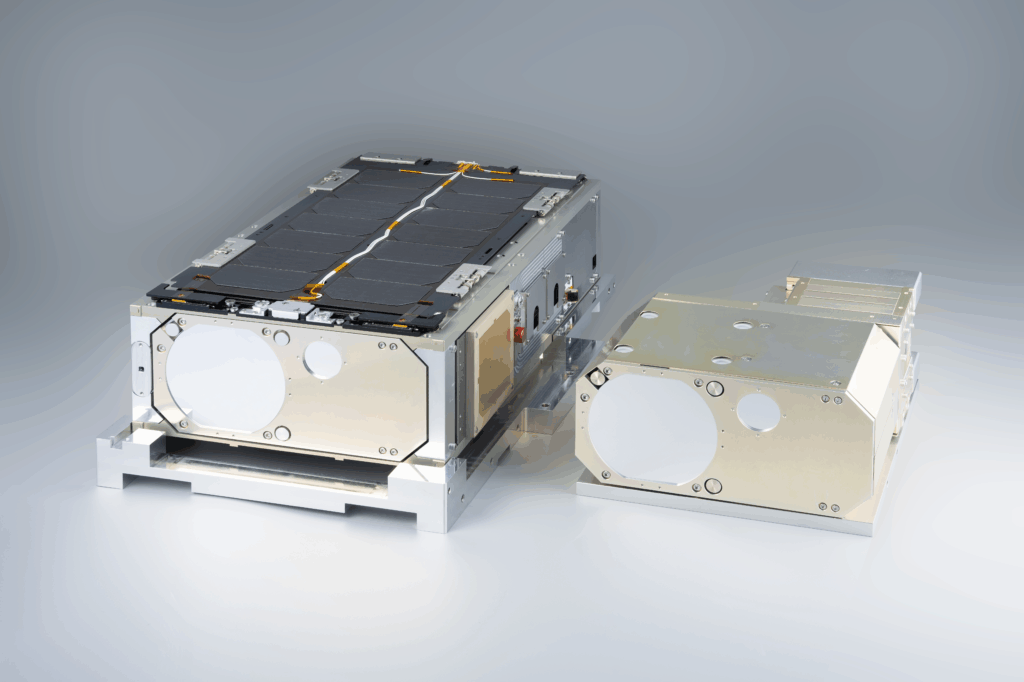 Demonstration model of LEO satellite (AE4La) and onboard optical wireless communication device
Demonstration model of LEO satellite (AE4La) and onboard optical wireless communication device
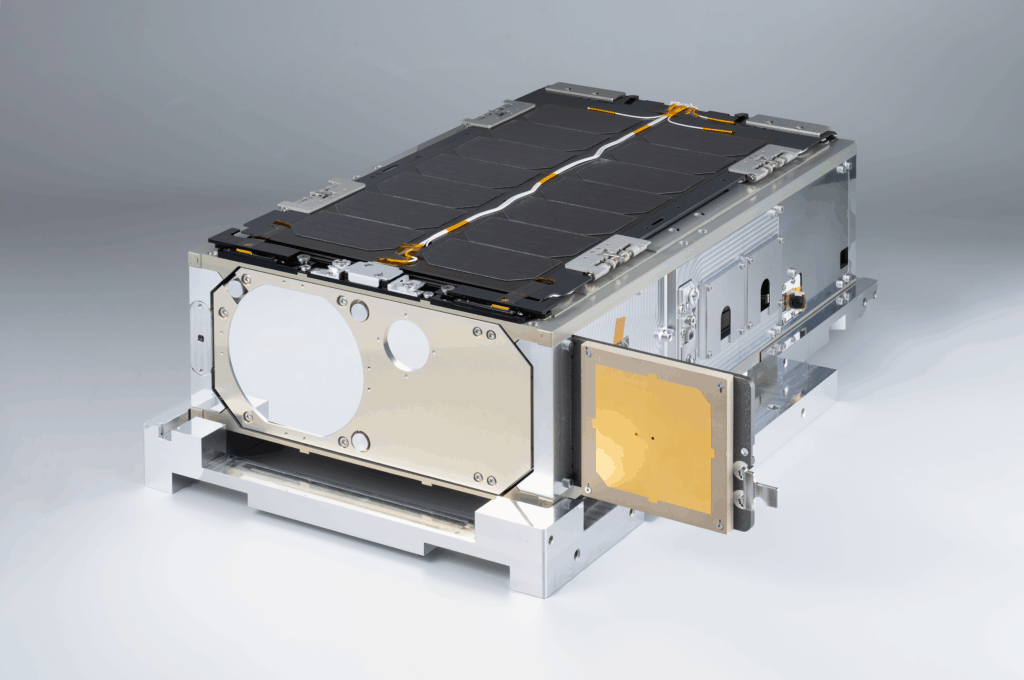 Demonstration model of LEO satellite(AE4La)
Demonstration model of LEO satellite(AE4La)
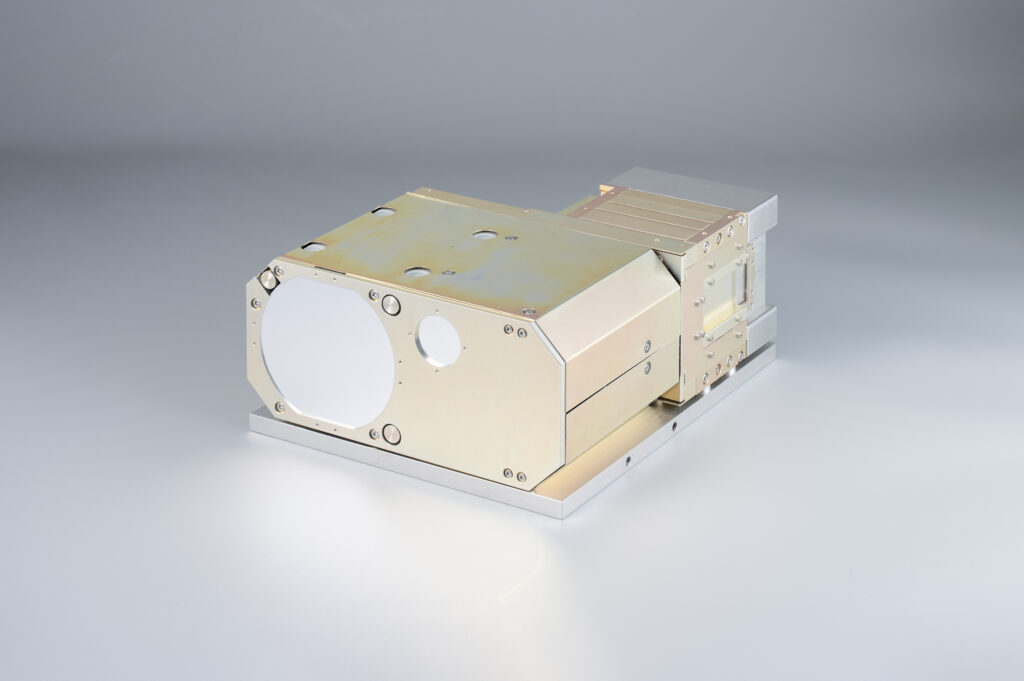 Optical wireless communication device
Optical wireless communication device
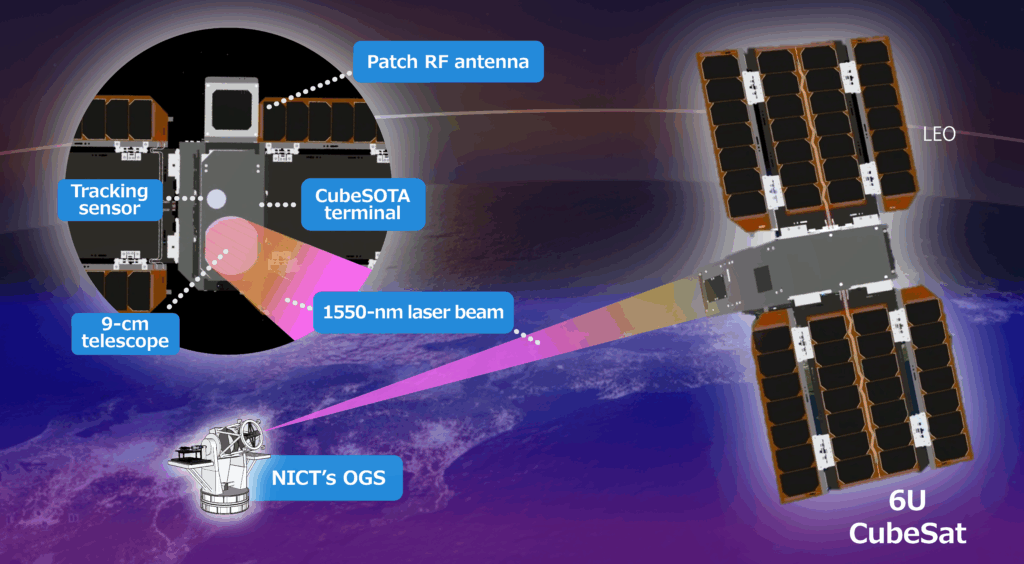 Conceptual image of optical wireless communications between a satellite and a ground station
Conceptual image of optical wireless communications between a satellite and a ground station
KIYOHARA OPTICS Inc.
KIYOHARA OPTICS has a 76-year history as a comprehensive optics manufacturer, specializing in the design and development of optical components for research, custom production of specialized optical parts, and consulting in optics. The company has contributed to space development through the manufacturing of space telescopes for Earth observation satellites, and the development of optical transceivers for LEO and HAPS optical communications.
– Founded: April 10, 1949 (Incorporated: June 18, 1987)
– Headquarters: 3-28-10 Funado, Itabashi, Tokyo
– President: Hirohiko Shinonaga
– URL: https://www.koptic.co.jp/opt/eng
National Institute of Information and Communications Technology (NICT)
NICT is Japan’s sole public research institute specializing in the field of information and communications technology (ICT). It conducts R&D comprehensively from basic to applied research, while actively collaborating with universities, industry, local governments, and domestic/overseas research institutes. NICT strives to return research results to society and foster innovation.
– Established: April 2015
– Headquarters: 4-2-1 Nukui-Kitamachi, Koganei, Tokyo
– President: Hideyuki Tokuda
– URL: https://www.nict.go.jp/en/
SoftBank Corp.
Under its “Beyond Carrier” strategy, SoftBank is going beyond the traditional telecommunications operator framework by leveraging advanced technologies such as AI, IoT, and 5G to create new businesses across industries and drive digital transformation (DX). Guided by its vision of “Ubiquitous Transformation (UTX),” SoftBank is working to integrate terrestrial mobile networks with NTN using satellites and HAPS to build a communication infrastructure that ensures seamless connectivity everywhere.
– Established: December 1986
– Headquarters: 1-7-1 Kaigan, Minato, Tokyo
– President & CEO: Junichi Miyakawa
– URL: https://www.softbank.jp/en/
About ArkEdge Space
ArkEdge Space is a Japanese space technology company offering end-to-end solutions for micro-satellite constellations—from planning and design to mass production and operations. Guided by its mission of “empowering people with satellites for a prosperous future,” the company is advancing capabilities in Earth observation, maritime satellite communications (VDES), optical communications, and low-Earth orbit satellite positioning, as well as lunar activities and deep space exploration. Through our mission, ArkEdge Space continues to drive the advancement of space innovation and its practical application.
Head Office Location
3F, Dome Ariake Headquarter, 1-3-33 Ariake, Koto-ku, Tokyo, Japan
CEO: Takayoshi FUKUYO
Founded: in July 2018
Website: https://arkedgespace.com/

